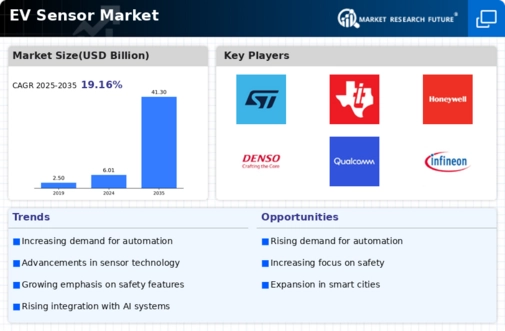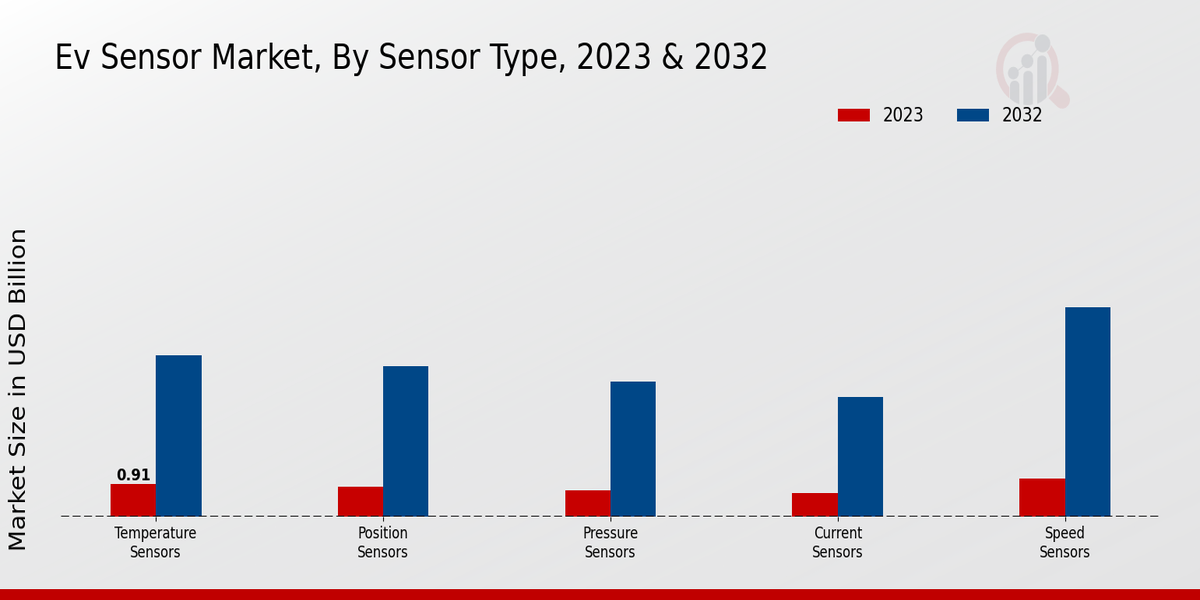Market Growth Projections
The Global EV Sensor Market Industry is projected to experience remarkable growth in the coming years. With the market valued at 6.01 USD Billion in 2024, it is expected to reach 41.3 USD Billion by 2035. This growth trajectory suggests a compound annual growth rate (CAGR) of 19.16% from 2025 to 2035. Such projections indicate a robust demand for sensors as electric vehicles become increasingly mainstream. The anticipated growth reflects not only the rising adoption of electric vehicles but also the continuous advancements in sensor technology, which are essential for enhancing vehicle performance and safety.
Growing Focus on Vehicle Safety
The increasing emphasis on vehicle safety is a significant driver of the Global EV Sensor Market Industry. As electric vehicles become more prevalent, manufacturers are prioritizing safety features to enhance consumer confidence. Advanced driver-assistance systems (ADAS) rely heavily on sensors to monitor surroundings and prevent accidents. The demand for these safety features is expected to rise, leading to an increased need for sophisticated sensor technologies. This focus on safety aligns with broader trends in the automotive industry, where consumers are increasingly seeking vehicles equipped with cutting-edge safety technologies. Consequently, the Global EV Sensor Market Industry is anticipated to benefit from this heightened focus on safety.
Rising Demand for Electric Vehicles
The increasing global demand for electric vehicles is a primary driver of the Global EV Sensor Market Industry. As consumers become more environmentally conscious, the shift towards electric mobility accelerates. In 2024, the market is projected to reach 6.01 USD Billion, reflecting a growing acceptance of EVs. This trend is further supported by government incentives and regulations aimed at reducing carbon emissions. For instance, various countries are implementing stringent emission standards, which in turn boosts the need for advanced sensors that enhance vehicle performance and safety. Consequently, the Global EV Sensor Market Industry is poised for substantial growth.
Expansion of Charging Infrastructure
The expansion of charging infrastructure is a vital factor influencing the Global EV Sensor Market Industry. As the number of electric vehicles on the road increases, the need for a robust charging network becomes paramount. This infrastructure not only supports the growth of EVs but also necessitates the integration of sensors for monitoring and managing charging stations. Enhanced sensor systems can optimize charging processes, ensuring efficiency and reliability. As governments and private entities invest in charging infrastructure, the Global EV Sensor Market Industry is likely to see substantial growth, driven by the interconnectedness of charging solutions and sensor technologies.
Government Initiatives and Regulations
Government initiatives and regulations play a crucial role in driving the Global EV Sensor Market Industry. Many governments worldwide are implementing policies that promote the adoption of electric vehicles, including tax incentives, subsidies, and infrastructure development. These measures not only encourage consumers to purchase EVs but also stimulate the demand for associated technologies, including sensors. For example, regulations mandating advanced safety features in vehicles necessitate the integration of high-performance sensors. As a result, the Global EV Sensor Market Industry is likely to experience robust growth, with a projected CAGR of 19.16% from 2025 to 2035, underscoring the impact of regulatory frameworks.
Technological Advancements in Sensor Technology
Technological innovations in sensor technology significantly influence the Global EV Sensor Market Industry. The integration of advanced sensors, such as LiDAR, radar, and camera systems, enhances vehicle automation and safety features. These sensors are crucial for applications like adaptive cruise control and collision avoidance systems. As manufacturers strive to improve the functionality and reliability of electric vehicles, the demand for sophisticated sensor systems is likely to rise. This trend is expected to contribute to the market's expansion, with projections indicating a growth to 41.3 USD Billion by 2035. Thus, the evolution of sensor technology remains a pivotal factor in shaping the industry.














